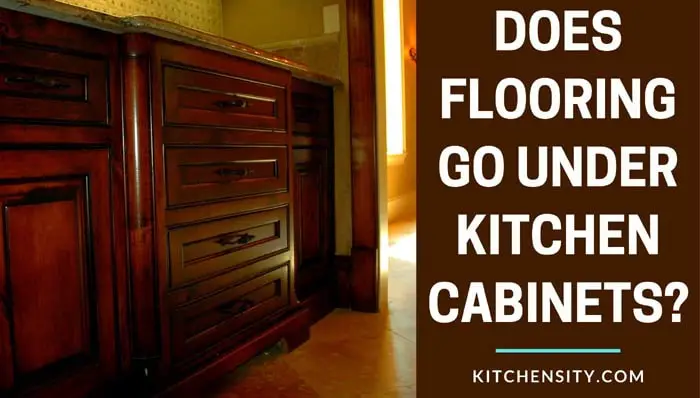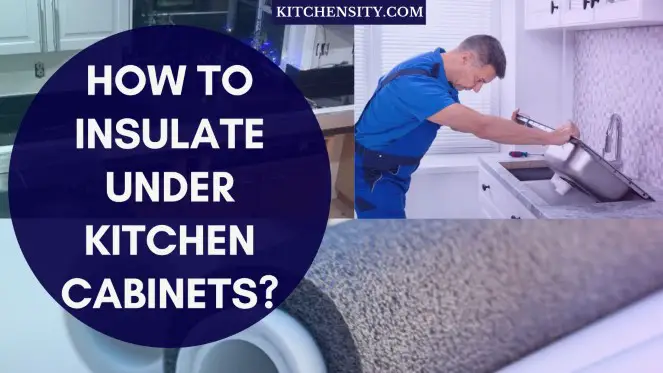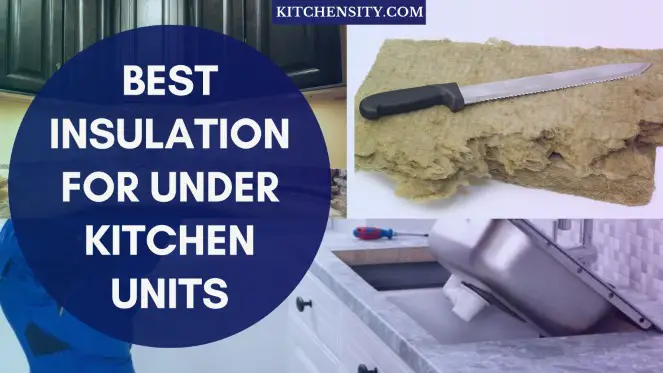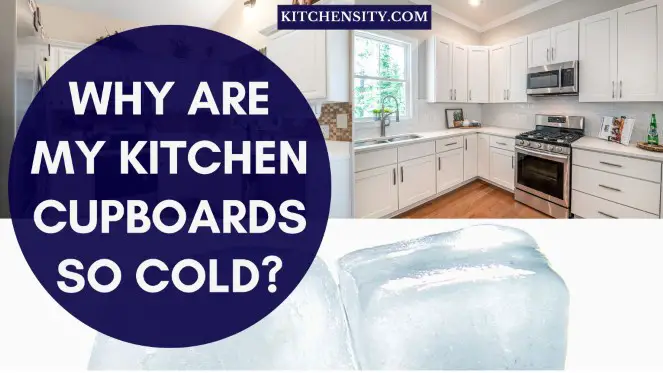There are various ways to protect your kitchen cabinets under the sink, from sealing your sink to waterproofing your current cabinets. No matter what your budget is, there’s an option available for you.
You can put a water-resistant mat under your sink to protect your cabinets. This mat includes a felt fabric layer on the top to absorb the liquids or stains and can effectively prevent liquid from spilling out or seeping into the cabinets. So, it protects the cabinets from getting damaged and thus keeps them dry and clean.
Using the mat in conjunction with our other tips, like sealing your sink or waterproofing cabinets, can give great results. Ignoring water damage is not an option, as it could lead to costly repairs further down the road. But, if you’re proactive, you have a greater chance of preserving your cabinets for the long run.
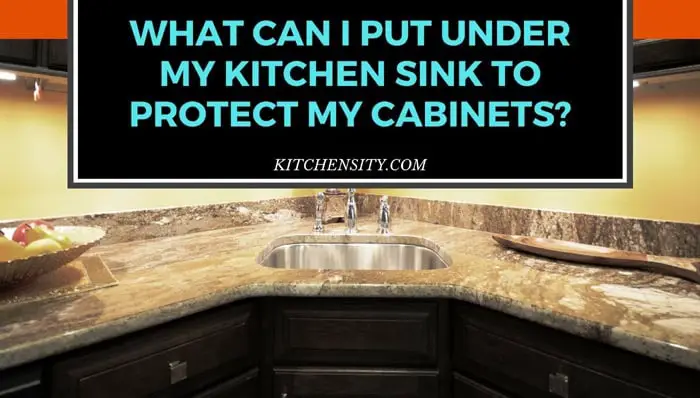
So take these simple steps and start protecting your cabinets today.
Table of Contents
- 1 1. By Waterproofing Your Existing Cabinets.
- 2 2. By Sealing Your Sink.
- 3 3. By Putting Water-Resistant Mats.
- 4 Other Ways To Protect Kitchen Cabinets Under The Sink.
- 5 Final Thoughts On Protecting Kitchen Cabinets Under Sink.
- 6 FAQs (Frequently Asked Questions).
- 6.1 What Is The Best Way To Protect Kitchen Cabinets Under The Sink?
- 6.2 Can I Use Regular Mats Or Rugs Under The Sink To Protect Cabinets?
- 6.3 How Often Should I Check For Leaks Under The Sink?
- 6.4 Do I Need To Hire A Professional To Seal My Sink?
- 6.5 Are There Any Eco-Friendly Options For Protecting Cabinets Under The Sink?
- 6.6 Are Shelf Liners Worth It?
1. By Waterproofing Your Existing Cabinets.
By waterproofing your existing cabinets, you can prolong their lifespan and prevent problems like rot and warping. Here’s how:
- Clean your cabinets thoroughly from top to bottom using your preferred cleaner.
- Empty the cabinets and let them dry completely.
- Wait at least 12 hours between cleaning and waterproofing.
- Apply sealant to the inside of the cabinets first, then work your way out, covering every inch, including hinges.
- Apply extra sealant to areas prone to water exposure and wear.
- Consider applying a second coat of sealant to the entire cupboard.
- Allow the sealant to dry fully for at least a day before restocking your cupboard.
2. By Sealing Your Sink.
Leaky sinks can cause problems that extend far beyond the lifespan of your cabinets. So if you have a faulty sink, it’s a good idea to get it fixed as soon as possible. Fortunately, this is easy enough to do with some materials from the hardware store.
Here’s how to do it:
- Use a putty knife to remove old caulk or sealant from the edges of your sink.
- Clean the sink area thoroughly with a cleanser and let it dry completely.
- Apply a new silicone sealant evenly around the base of the sink.
- Spread the sealant using your finger or a putty knife.
- Clean up any excess sealant and let it dry fully before using the sink again.
3. By Putting Water-Resistant Mats.
You can protect your cabinets from water damage by putting water-resistant mats under your sink. Here’s how:
- Use a water-resistant mat with other protective measures, like sealing your sink or waterproofing cabinets.
- Water-resistant mats are affordable and can be cut to fit your specific cabinet size.
- They come in different colors, although they will likely be hidden under the sink.
- The mat protects the top of the cabinet, allowing you to stack items without risking damage.
- Water-resistant mats are an easy and effective way to protect your cabinets, especially if you need a quick fix.
Also Read – How To Repair Chipped Paint On Kitchen Cabinets?
Other Ways To Protect Kitchen Cabinets Under The Sink.
Installing a drip tray under the sink is a practical way to protect cabinets from leaks and spills. These trays can catch water before it reaches the cabinet, reducing the risk of water damage. They are easy to install and are available in various sizes to fit different sink configurations. Drip trays are especially useful for households with older or faulty plumbing.
Using cabinet liners is another effective method to protect kitchen cabinets under the sink. Liners add a layer of waterproof protection and make cleaning up spills easier. They come in various materials, such as rubber or plastic, and can be trimmed to fit the cabinet’s dimensions. Cabinet liners are affordable and can prolong the lifespan of cabinets by preventing water damage.
Adjusting plumbing under the sink is crucial for preventing leaks that can damage cabinets. Checking for and fixing any leaks promptly can help maintain the integrity of the cabinets. Properly installed and maintained plumbing can also improve the overall functionality of the sink area.
Installing a splash guard around the sink can further protect cabinets from water damage. Splash guards can prevent water from splashing onto the cabinets, especially during activities like dishwashing. They are available in various materials and styles to match different kitchen aesthetics. Splash guards are easy to install and can be a practical addition to any kitchen sink.
According to HGTV “Water damage is a common issue in kitchen cabinets under the sink. Using shelf liners or mats can help protect cabinets and make cleaning up spills easier.”
Also Read – How To Fix Scratched Kitchen Cabinets?
Final Thoughts On Protecting Kitchen Cabinets Under Sink.
Protecting kitchen cabinets under the sink is essential to prolong their lifespan and maintain their appearance. Using a combination of methods such as waterproofing existing cabinets, sealing the sink, and using water-resistant mats or liners can effectively prevent water damage and keep cabinets dry and clean. Regular maintenance and checking for leaks can help catch issues early and prevent costly repairs. Investing in these protective measures can ultimately save you time, money, and hassle in the long run.
Also Read – How To Cut Down Kitchen Cabinets?
FAQs (Frequently Asked Questions).
What Is The Best Way To Protect Kitchen Cabinets Under The Sink?
The best way to protect kitchen cabinets under the sink is by using a combination of methods such as waterproofing existing cabinets, sealing the sink, and using water-resistant mats or liners.
Can I Use Regular Mats Or Rugs Under The Sink To Protect Cabinets?
It’s not recommended to use regular mats or rugs under the sink, as they may not be water-resistant and can trap moisture, leading to mold and mildew growth. It’s best to use specifically designed water-resistant mats or liners.
How Often Should I Check For Leaks Under The Sink?
It’s a good idea to check for leaks under the sink regularly, at least once every few months. Also, be vigilant for signs of water damage, such as warping or discoloration of the cabinet material.
Do I Need To Hire A Professional To Seal My Sink?
Sealing a sink can be a DIY project with the right materials and instructions. However, if you’re unsure or uncomfortable with the process, it’s best to consult a professional to ensure it’s done correctly.
Are There Any Eco-Friendly Options For Protecting Cabinets Under The Sink?
Yes, there are eco-friendly options available, such as using non-toxic sealants and water-resistant mats made from sustainable materials. These options can help protect your cabinets while being environmentally friendly.
Are Shelf Liners Worth It?
Yes, shelf liners can be worth it as they can protect your cabinets from spills, stains, and scratches, extending their lifespan. They also make cleaning easier and can add a decorative touch to your shelves.
Katrina Smith is a seasoned expert with over 25 years of experience in all things related to cooking and the kitchen. As an avid cook and kitchen enthusiast, she is passionate about sharing her knowledge and expertise on cookware, kitchen appliances, kitchen tips, and kitchen staples.
Through her articles and reviews, Katrina aims to inspire and help others improve their cooking skills, experiment with different ingredients, and invest in quality cookware and appliances.

![3 Effective Ways To Update Old Kitchen Cabinets [Under $100] 3 How To Update Old Kitche Cabinets](https://www.kitchensity.com/wp-content/uploads/2021/05/How-To-Update-Old-Kitche-Cabinets.jpg)
![Refacing Kitchen Cabinets: An Ultimate DIY Guide [2023] 4 Refacing Kitchen Cabinets](https://www.kitchensity.com/wp-content/uploads/2021/05/Refacing-Kitchen-Cabinets.jpg)
